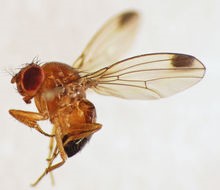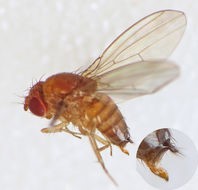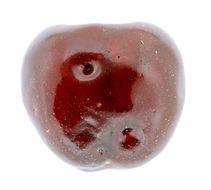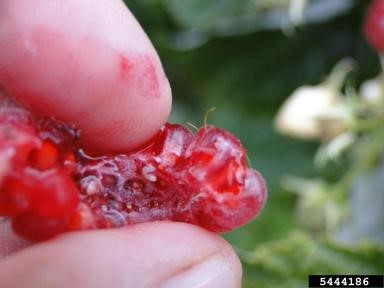With the 2022 growing season well underway, we decided to feature an insect that is becoming a growing problem on the Canadian Prairies: Spotted Wing Drosophila (SWD), Drosophila suzukii.
This invasive insect is thought to have originated in southeast Asia. The first record of SWD is from Japan in 1916. SWD is now established in small and stone fruit production areas throughout North America. SWD has been reported in British Columbia since 2009, and was first reported in Alberta in 2010. Occurrence in Alberta, and low levels in southern Manitoba in 2019 suggested that SK infestations were likely imminent. Monitoring for this pest conducted by the Saskatchewan Ministry of Agriculture began in 2019. Populations were detected throughout the province that year, spurring continued monitoring. Data from 2021 and 2022 indicate continued widespread distribution throughout the province. Early season detection of significant numbers suggests overwintering populations on the prairies.
SWD is an economic pest of many soft fruits, including raspberries, strawberries, cherries, blueberries and plums. Saskatoon berry has been documented as a host. Haskap is also considered to be susceptible but may escape major damage, as SWD populations typically do not increase until after harvest. However, Ontario haskap growers have seen economic losses when a mild winter is coupled with factors that lead to delayed ripening. SWD adults are 3-4 mm, yellow-brown with red eyes. Males have a conspicuous spot on the leading edge of each wing (Figure 1).

Females lack the spots but have a characteristic large, serrated ovipositor (Figure 2).

SWD overwinter as adults. These become active in the spring, mate and seek egg-laying sites. Female SWD lay as many as 16 eggs per day for up to two months. An average of 384 eggs are produced by each female. With their serrated ovipositor, female SWD deposit eggs under the skin of healthy, ripening fruit. Oviposition sites look like pin-holes in the skin (Figure 3). These can also serve as avenues of entry to pathogens like brown rot and botrytis.

Several larvae can occur per fruit (Figure 4). Larval feeding causes fruit to become prematurely soft and unmarketable. Larvae mature in 3-13 days and pupate most commonly in the fruit. The pupal stage lasts another 3-15 days. Multiple generations per year are common.

Although SWD adults can be moved around by winds, movement of contaminated plant material is the major route for initial dispersal. Current management includes culling and destruction of soft fruit and the application of insecticides to limit populations. There are several products registered to control SWD. These can be found here: http://pr-rp.hc-sc.gc.ca/ls-re/index-eng.php. Use the search term ‘spotted wing drosophila’. Product updates occur periodically so check this site regularly.
